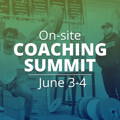Co-contractions and Athletic Movement
BUILD YOUR OWN PROGRAM
Download our FREE Template by entering below

Science Of Athletic Movement
Discussing athletic movement, we first have to identify what athletic movement is. In simplest terms, I like to think of athletic movement as chaos coordination and high-speed coordination going hand in hand. Chaos coordination arises from a chaotic situation in sports, like a running back hitting a hole, seeing the linebacker, and having to react. The chaotic situation allows for multiple different reactions to occur in a manner that is as quick as possible. This happens in all open-skill sports and even some closed-skill sports. It is similar to a basketball player executing a Euro-step at a moment’s notice.
Chaos coordination involves multiple different joints, recruiting numerous different levels of musculature, and at the same time, doing something very technical at very high speeds; all of these things going on lead to athletic movement. It is also as complicated as quieting all the external noise around the body and using things like dynamic trunk control, reflexive capability, and making rapid movement as smooth as possible. If athletes make a rapid movement as smooth as possible, they can execute their technical skills at a high level. Patrick Mahomes is a great example of chaos coordination when he throws a sidearm sling as he is falling over while a D-end is barreling down, and it ends up being a touchdown. That is chaos coordination incarnate.
Open Skilled Sports
Open skilled sports take on a massive amount of external force. Open skilled sports have high degrees of reaction forces, particularly while athletes are running. Athletes also typically have to deal with the force of an opponent. Open skilled competition involves high speeds with high levels of force coming from all different directions. It isn’t like Lasha Talakhadze snatching close to 500 lbs; that’s different; that is a closed skill. Jordan Burroughs setting up a crazy blast double isn’t pre-programmed; in the moment, that is athleticism manifested in chaos.
As intelligent as the body has to be to have a sizeable kinesthetic vocabulary, it is essential to understand that typically high-speed explosive movements have to be a little dumber. They aren’t as complex as something like the waltz. Athletes can execute the complicated movements of the waltz at slow speeds. However, the goal would be to get the waltz performed at very high speeds. Now think of Usain Bolt running at top speed. Now envision Usain Bolt trying to cut at that top speed. He would struggle to change direction at such a speed. It is harder to cut at a top speed. Because of this difficulty, we have to hypothetically mold the two areas of the waltz and Usain Bolt to have athletes that can coordinate at high speeds.
Remember Reflexive
Reflexive strength highlights the fact that our brain operates slower than most of these high speed movements. We can’t actually execute these movements with brain control, central control. That is where central pattern generators come into play. For this blog, we have to remember the concept that the blog is a little slow to the physical functions we see being performed in open skill sports.
Knowing our brain is a little slow, we can train central pattern generators and the different technical skills through the process of chunking to learn different, specific patterns at slower speeds. Breaking the movements down into smaller parts, chunking, will allow us to train in a manner that enables us to execute trained movements faster out on the competition environment.

Co-Contractions
Co-contractions are essentially when muscles are active around a specific joint at high speeds, co-contractions occur to stabilize the joint in preventive, corrective fashion. Think of Barry Sanders planting and cutting. What is happening in his hips and knees and ankles involve co-contractions to prevent crazy amounts of noise that could make his joints unstable. His skill of mastering co-contractions allows him to get out of the situation faster because of the more stable ground.
A stable platform is easier to walk on than a shaky platform. That is the co-contraction concept in a very simplified nutshell.
Using the Barry Sanders analogy, if his movements were based just on brain control, his reflexes would occur without a 50 millisecond delay to initiate that cut. Barry’s body had the skill of pre-flexes. Pre-flexes are local and autonomous. Pre-flexes known as co-contractions, which are semi-autonomous, enable Barry to do something without initiating central control through the spinal cord. Pre-flexes and co-contractions are quite synonymous; they force the body to pre-tense musculature to take on a massive amount of force and apply it to changing direction.

Co-contractions are a skill that have to be trained so that the body learns how to pre-flex so the body can use the massive loads and external forces to get out of cuts more effectively with more stability. Co-contractions solve the problem of the slow brain and make the body more intelligent. We know the gut-brain axis is a thing. It is the same concept when we think of rhythmic patterns of agile movements like cutting with the hips and knees and ankles and all the other joints of the body. The movements are happening semi-autonomous from central brain control. With this knowledge, we can figure out how to train the body to be more athletic and improve movement.
Athletic Movement
High speed athletes, the athletes who are greater with their athletic movement, can hit hurdle hops and react quickly. I like to put mini-hurdles or even speed ladders to increase or enhance perturbations in the rhythm. Just doing straight hurdle hops with no mini-hurdles or speed ladders is easier. But if we put mini-hurdles in that make the athlete adjust their height and force recruitment or if we put in a side speed ladder jump, we can force bodies to get smarter.
Ever see someone do a double hop before their main jump with hurdle hops? They land and go hop, hop, go. The problem there is that athletes are doing two jumps and taking more time to react. Athletes are operating with an afferent signal (sending a signal to the brain that was sending it back to the body) in this case–the second hop creates more time for the body to react to the speed. In this case, I want to create a maximum voluntary action, like a back squat or front squat, before the hurdle hops. The first round of jumps, I’ll cue “Jump, Go, Jump Go” and to just think about what happened with the squat. The athlete should execute the cue without thinking about it because the body will learn through chunking, increase its intelligence, and apply the co-contraction skill to execute the movement more athletically.
Co-contractions can be learned in the weightroom and that learning can be carried over to the field.

The same can be done with the vertical jump. Ever see an athlete who drops extremely deep in their counter movement before jumping? Give them a cue “Shorter drop and go” and the breaking period will become faster, allowing for greater recruitment with better co-contractions to increase the vertical jump. The vertical jump is a skill that leads to better performance athletically. During the counter-movement we will see the quads and hamstrings active. When the quads and hamstrings are active around the knee joint we are bearing witness to a co-contraction that mutes the noise that allows them to recruit faster and get out of the position faster, and thus more athleticism.
Looking At Co-Contractions And Pre-Flexes
The more complex a movement is (the more chaotic the movement is), we have to either have a simpler structured body or a body that can make the structure simpler. Ideally, we want to come over to the side that the extremely complex movement is trained to enhance the kinesthetic intelligence of our athletes’ bodies. Co-contractions and pre-flexes dampen the noise and increase force sharing which leads to greater performance on the competitive open-skill sports; it does the same for closed skill sports.

Application
The first step is through technical coordination exercises. High speed movements with high force. Cleans, snatches, jerks, and all their variations. Co-contractions happen in these exercises over and over again. We know technical coordination movements enhance our co-contraction capability.
The second key is using high speed movements with high speed deceleration. In sprinting we talk about slowing down the slowest, which is extremely important, but when we are talking about athletic movement we need to slow down the fastest. Training how to slow down a massive amount of force the fastest leads to more athleticism in the competitive environment.
The third key is using contrast methods. Using maximal voluntary actions can enhance an athlete’s abilities with co-contractions. Contrast methods are an extremely valuable way to enhance co-contractions.
The last two key concepts involve using reflexive strength training and plyometric training to teach the body how to co-contract. Chunking methods through specific sport applications help tremendously in this regard to enhance athletic movement.
Recap
Co-contractions and pre-flexes are key to handling high speed chaos. We need to know the basics of physiology to create a more stable structure (remember the shaky platform analogy). With pre-flexes and co-contractions we make the structure more stable and thus provide a platform for more athleticism. We have to use general strength movements to trigger awareness of what the body is feeling and then over time the general strength movements become more and more and more complex and less thoughtful; the movements are still intentional but they are semi-autonomous movements.
Finally, realize that different athletes have different levels of intelligence with their bodies. Some athletes can be introduced to reflexive work much earlier than other athletes because their bodies are able to coordinate at faster speeds in chaotic situations.
Related Posts
Blog Topics

Yo, It's Dane
Welcome to the Garage Strength Blog, where it is my goal to provide you with the experience and knowledge I've gained in the strength and conditioning world over many years of learning from both successes and failures. I train elite-level athletes in a multitude of sports from the high school to professional levels, already producing 5 Olympics and 30+ National Champions. If you want to be the next champion I train, check out my strength programs below!
Start Training With Me

Join for free educational videos EVERY WEEK on strength coaching and athletic performance
Learn How To Program
At Garage Strength and Kutztown University
Presentations on how to program for your team
Periodization, exercise selection, and rep schemes
Hands-on program building workshop
Flexible yearly and block programming templates
Observe Dane train his elite athletes at Garage Strength


